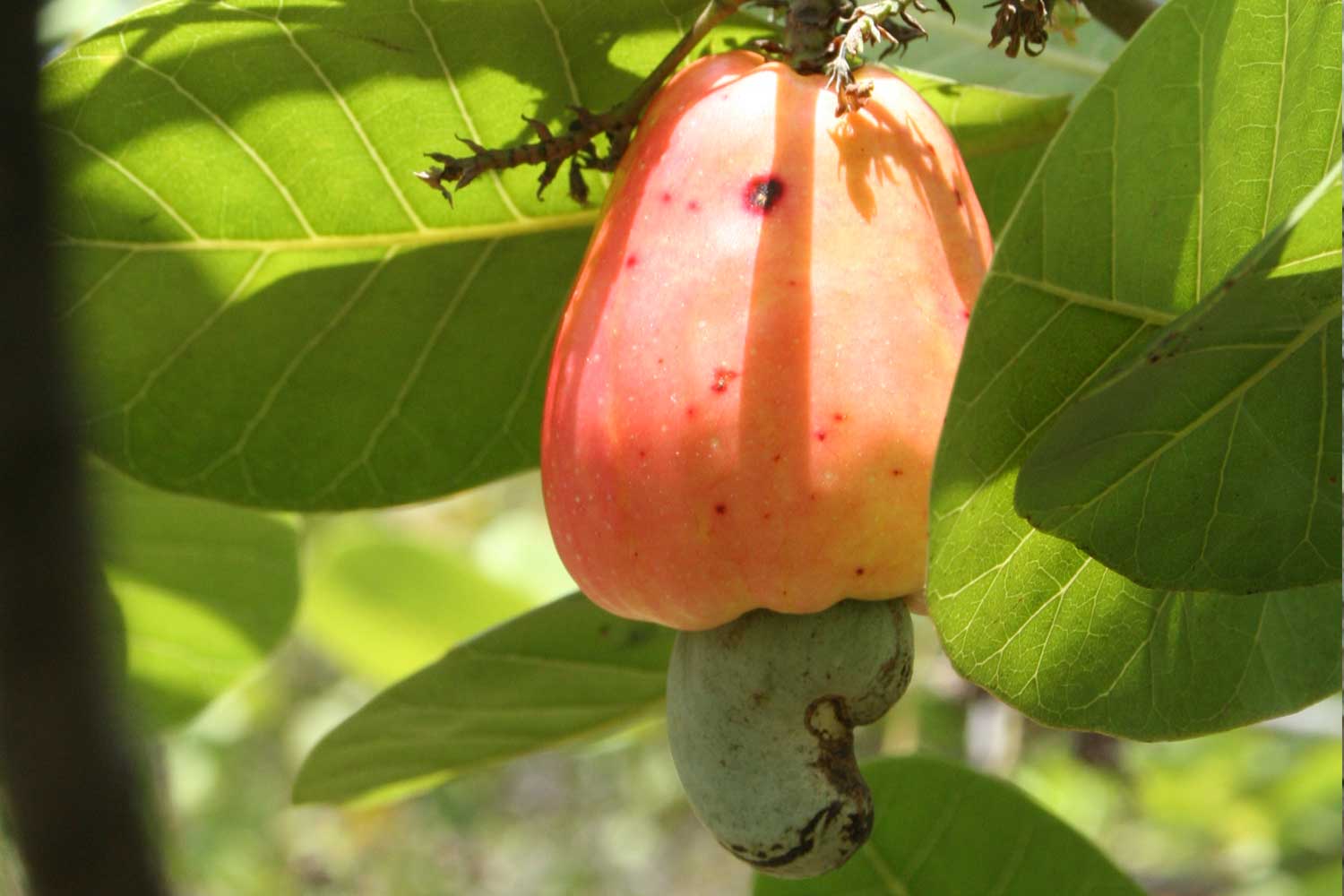
TTQ Co. Ltd.
Cashew before harvest | Pre harvesting Cashew | Good Cashews
Learn the different steps of harvesting cashew nuts and its process. From pruning to harvest, get the information you need to understand how cashews are harvested. Discover how our sustainable practices ensure a high-quality product.
Pre-harvesting activities are crucial in the cashew industry as they lay the foundation for a successful and efficient cashew nut harvest. This stage involves various tasks and considerations to ensure optimal crop health and maximize yield. Here’s an overview of pre-harvesting activities in the cashew industry:
Proper management of cashew orchards is essential for healthy tree growth and optimal nut production. This includes activities such as pruning, weeding, and disease and pest management. Pruning helps maintain the shape and size of the trees, enhances sunlight penetration, and facilitates easier harvesting. Regular weeding prevents competition for nutrients and water, ensuring the trees’ overall health.
Cashew trees require adequate water throughout their growth cycle, especially during the fruit development stage. Irrigation is essential in regions with inadequate rainfall or during dry periods. Water management techniques, such as drip irrigation or sprinkler systems, can be employed to provide the necessary moisture to the trees’ root zone.
Monitoring the maturity of cashew nuts is crucial to determine the optimal harvest time. Cashew nuts mature at different rates, and harvesting too early or too late can impact the quality and yield. Various indicators are used to assess maturity, including the color and size of the cashew apple, the thickness of the shell, and the sound produced when the nut is tapped. Experienced farmers or agronomists can help determine the ideal harvest time based on these indicators.
Proper planning is essential to ensure an organized and efficient harvest. Factors to consider include labor availability, equipment requirements, and post-harvest processing facilities. Adequate labor should be arranged to handle the harvest volume, and any necessary machinery, such as ladders, poles, or shaking machines, should be prepared. It’s also important to plan for the transportation and storage of harvested cashew nuts.
Maintaining records of pre-harvest activities is beneficial for future reference and analysis. This includes tracking pest and disease management, irrigation schedules, fertilization, and pruning practices. By documenting these activities, farmers can make informed decisions in subsequent seasons and implement improvements based on past experiences.
Providing training and education to farmers and workers involved in cashew cultivation is crucial for effective pre-harvesting practices. Training sessions can cover topics such as orchard management, disease and pest identification, irrigation techniques, and maturity assessment. Equipping individuals with knowledge and skills enhances their ability to make informed decisions and implement best practices in cashew cultivation.
It is important to adhere to local regulations and guidelines related to pre-harvesting practices. This includes using approved fertilizers and pesticides, following recommended application rates, and complying with environmental and safety standards. Compliance ensures the sustainability of cashew production and protects the environment and the well-being of workers and consumers.
Pre-harvesting activities significantly impact the success of the cashew nut harvest. By implementing proper orchard management practices, assessing nut maturity accurately, planning effectively, and complying with regulations, farmers can optimize yield, quality, and profitability. Well-executed pre-harvesting practices set the stage for a productive harvest and contribute to the long-term sustainability of the cashew industry.
Determining the ripeness of cashews involves assessing both the external characteristics of the cashew fruit (cashew apple) and the internal condition of the cashew nut. Here are some indicators to help determine when cashews are ripe:
Cashew Apple Color: The color of the cashew apple can be an indication of ripeness. As the fruit matures, it changes from green to yellow, orange, or red, depending on the cashew variety. Ripe cashew apples tend to have a vibrant, uniform color.
Cashew Apple Texture: The texture of the cashew apple can also provide clues about its ripeness. Ripe cashew apples are generally firm but slightly soft to the touch. They should not be overly soft or mushy, as that may indicate overripeness or spoilage.
Cashew Nut Development: The development of the cashew nut inside the cashew apple is a crucial factor in determining ripeness. As the cashew apple matures, the cashew nut undergoes changes. It grows larger and becomes more distinct within the fruit.
Cashew Nut Color: The color of the cashew nut is an important indicator of ripeness. When cashews are ripe, the outer shell or pericarp of the cashew nut changes from green to light brown or grayish-brown. This color change indicates that the cashew nut is fully developed and ready for processing.
Cashew Nut Sound: Another way to assess ripeness is by gently shaking the cashew apple. If the cashew nut inside rattles, it is a sign that the nut has detached from the fruit's wall, suggesting maturity and readiness for harvest.
It's important to note that the ripeness indicators can vary slightly depending on the cashew variety and growing conditions. Therefore, it is recommended to consult local experts or experienced cashew farmers to determine the specific ripeness signs for the particular cashew variety being cultivated.
No, cashews cannot be eaten straight off the tree in their raw state. Cashews undergo a complex processing procedure before they are safe and enjoyable to consume. Raw cashews contain a toxic substance called urushiol, which is found in the shell and can cause skin irritation and allergic reactions.
The stages of cashew can be divided into several phases, encompassing the growth and development of the cashew tree, as well as the formation and maturation of the cashew fruit and nut. Here are the stages of cashew:
Seed Germination: The cashew tree begins its life cycle with the germination of a cashew seed. The seed sprouts and develops roots, ultimately leading to the emergence of a young seedling.
Seedling Growth: The seedling grows into a small sapling with leaves, branches, and a developing root system. During this stage, the sapling requires proper care, including watering, fertilization, and protection from pests and diseases.
Vegetative Growth: As the sapling continues to grow, it enters a phase of vegetative growth. The tree develops a stronger trunk, more branches, and an increased leaf canopy. This stage is crucial for establishing a healthy and robust cashew tree.
Flowering: The cashew tree reaches maturity and begins to produce flowers. Cashew flowers are small and delicate, typically appearing in clusters. The tree undergoes pollination, either through insects or wind, leading to the formation of cashew fruits.
Fruit Development: After successful pollination, the cashew flowers develop into cashew fruits, also known as cashew apples. The cashew apple is a fleshy structure that enlarges around the developing cashew nut.
Ripening: The cashew apple undergoes a ripening process, during which it changes color and texture. The color can vary depending on the cashew variety, ranging from green to yellow, orange, or red. The cashew nut inside the fruit also matures and develops.
Harvesting: Once the cashew fruits have ripened, they are ready for harvest. Harvesters carefully pluck the fruits from the tree, ensuring minimal damage to the cashew nuts inside.
Post-Harvest Processing: After harvesting, the cashew nuts go through a series of processing steps to remove the outer shells, dry the nuts, and prepare them for consumption or further processing.
Cashew trees typically begin to bear fruit and produce cashew apples within 2 to 3 years after being planted as seedlings.
Cashews | Cashew harvesting | Harvest | Cashew nut farming | Raw cashew nuts | Cashew farming
is harvesting cashews dangerous
cashew harvesting process
how are cashews harvested and processed
cashew harvesting burns
cashew harvesting unethical
harvested before, before harvest, before, cashew farming, shell liquid, quality nuts, farming project, cashew plantation,
cashew apples, nuts fall, products move, nuts, raw, source, raw cashew nuts

